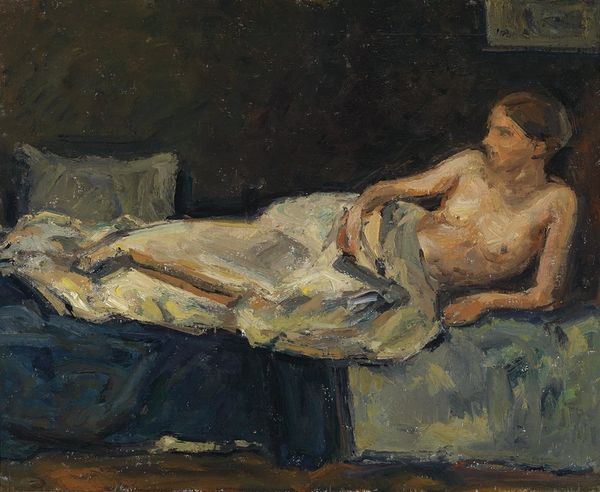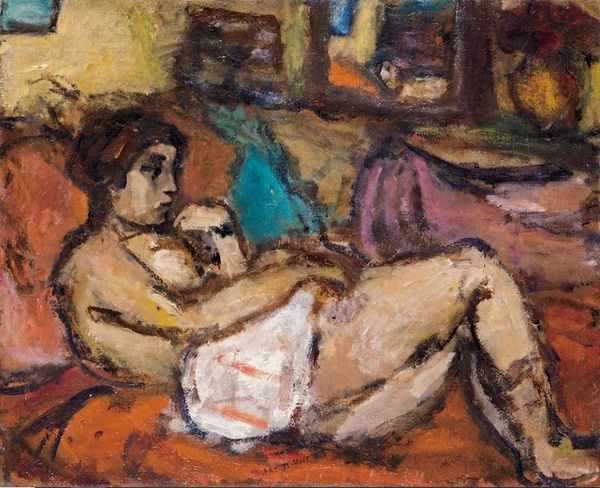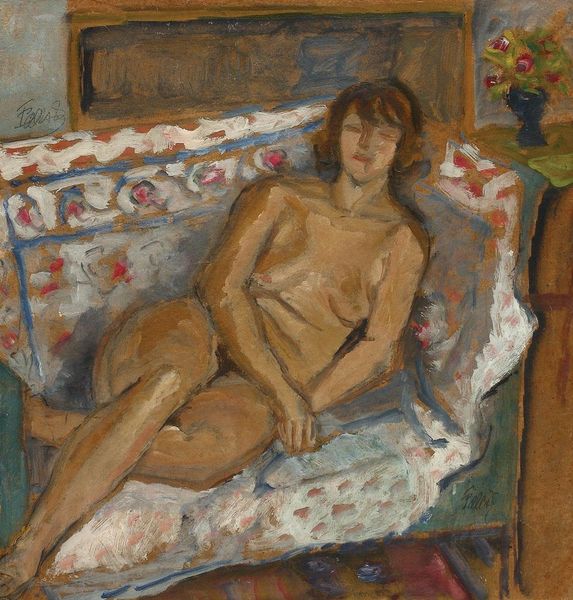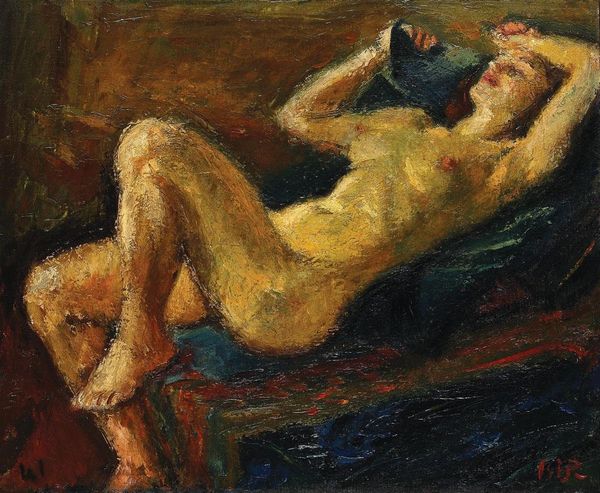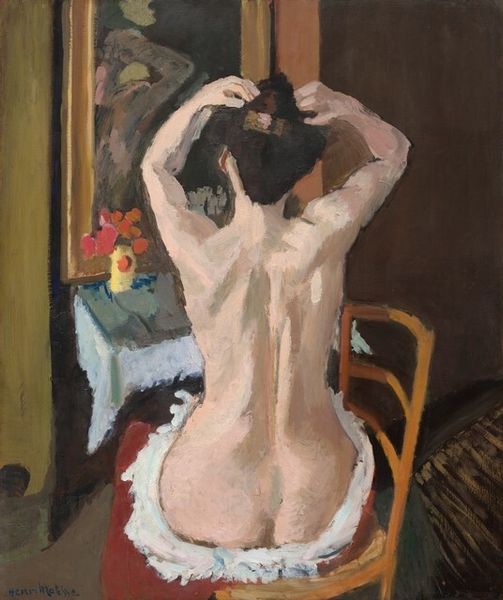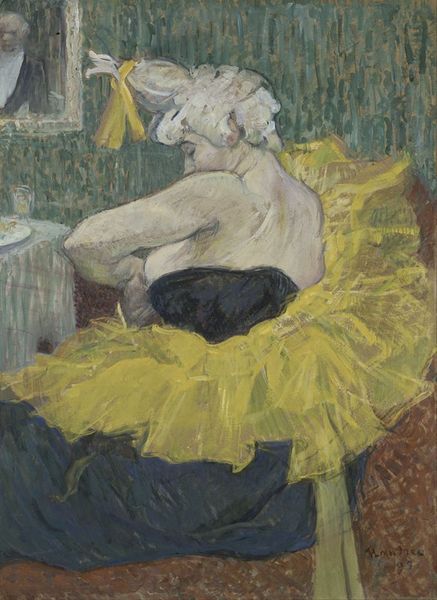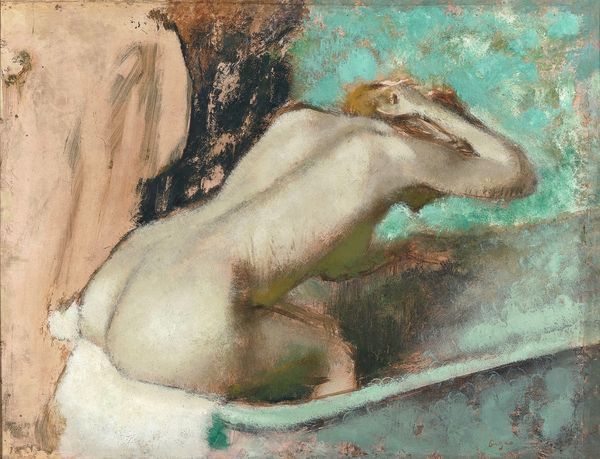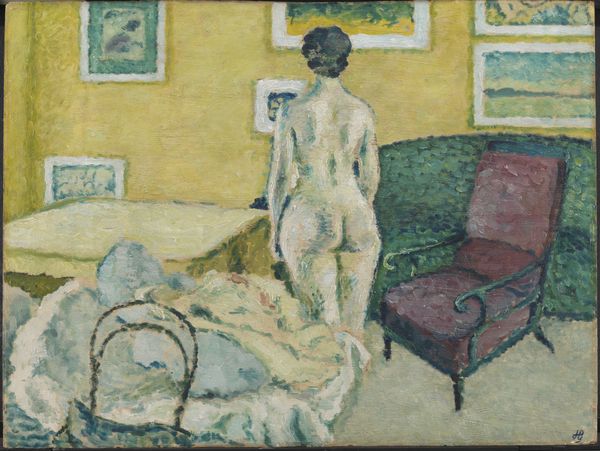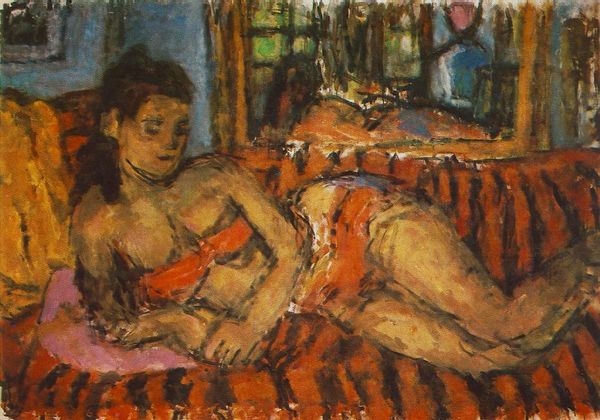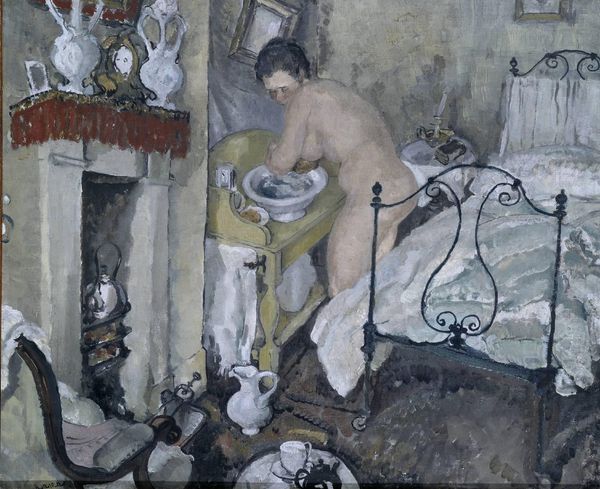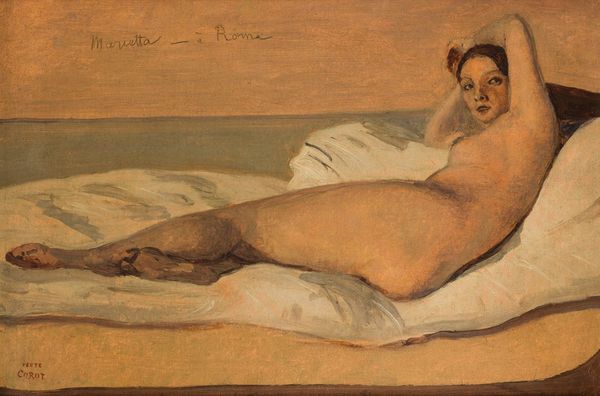
Dimensions: support: 511 x 406 mm frame: 722 x 630 x 104 mm
Copyright: CC-BY-NC-ND 4.0 DEED, Photo: Tate
Editor: This is Walter Sickert's "La Hollandaise," a striking, intimate painting. The woman's pose and the shadowy setting evoke a sense of vulnerability. What social dynamics might Sickert be exploring here? Curator: Consider Sickert's fascination with the marginalized. The title itself, "La Hollandaise," labels and perhaps exoticizes the subject. How does the woman's gaze, or lack thereof, challenge or reinforce the power dynamics inherent in the act of painting a nude? Editor: It's interesting how you point out the act of painting and power. I hadn’t considered it in that way. Curator: Think about how the depiction of women changed during Sickert's time. Is she a passive object, or is there agency in her posture, in her very presence within this space? What does her setting suggest about her status? Editor: I now wonder if Sickert critiqued social norms or perpetuated them. Thanks! Curator: Exactly, and art prompts us to keep questioning, to keep digging deeper.
Comments
Join the conversation
Join millions of artists and users on Artera today and experience the ultimate creative platform.
tate 8 months ago
⋮
Sickert challenged traditional idealised treatments of the nude. He placed his figures in real environments. This is one of several paintings showing a naked woman in poor surroundings: on a cheap iron bed in a dimly-lit room. The painting does not reveal the woman’s identity, but the title, ‘The Dutch Girl’, may refer to the nickname of a sex-worker in a realist novel by the nineteenth-century French author, Honoré de Balzac. The brush marks form a surface so rough that, if you look at it closely, the image seems to fragment. Gallery label, October 2020
